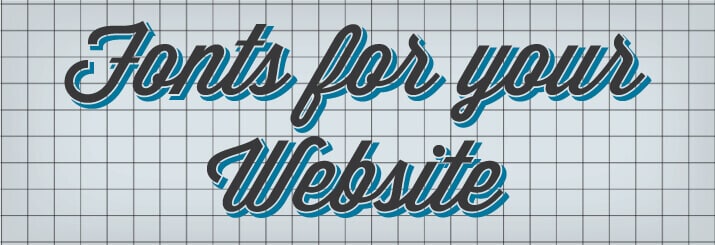Typography is, unfortunately, becoming a lost art. With a vast ocean of new typefaces to choose from and new typefaces being created everyday, it seems as if many people simply get discouraged and choose the first font they think might work. In fact, there are a few easy things to keep in mind when researching which typeface to choose that will make a world of difference in the readability and success of your website and, ultimately, your business.
The first question you must ask yourself is “what will be the purpose of this typeface?” When dealing with type on the web, there is usually a lot of content that a company needs to present in order to get the necessary information to the client or customer. Likewise, there is also a need for larger, header text to introduce these longer paragraphs, and also to navigate the site. Generally, a good rule of thumb is to keep the amount of typefaces used on one website to as few as possible. Too much variation in typeface can cause clutter and confusion. So in this case, and for most cases, two typefaces need to be chosen; one for the header or introductions and navigation, and one for the content.
The content of your site may be the most important way of getting information to your clients. When choosing a typeface best for the content, readability is the most important thing to consider. You want to be sure the reader is able to track from line to line easily without having to stop and relocate where they left off. Keeping the font as simple as possible can accomplish this, which means the selection of readable, content specific web fonts limits creativity and originality to an extent. In this case, the function of the typeface is more important than the form. There are many serif and sans serif fonts that can accomplish readability while maintaining the image of your company. Making sure the typeface you select is still readable with the color and format within your website design is the main goal. And for optimum versatility, the typeface you select must have many different variations, such as bold, italic, light, medium, etc. Also, selecting an extended typeface can create even more options, such as multilingual capabilities. When in doubt, read a chunk of content copy to make sure it is readable.
Choosing a header typeface, also called a display font, is usually an easier process than choosing the content typeface because a header typeface does not need to be as readable since it is not read line after line. But because it needs to grab the attention of the viewer while establishing the overall visual mood of the site, it can sometimes be tricky. The goal is to find a typeface that fits the image you want your company to portray. A typeface such as avenger may not be the best display font for a flower arrangement company (quite obviously). And while Edwardian Script might capture the image of the flower arrangement company, the readability is an issue for a website where customers go to find facts about the company fast. In this case, it is best to keep the typeface as simple and professional as possible while still maintaining some of the company’s personality.
Reference:
https://typographica.org/2011/on-typography/intro-to-typeface-selection/



